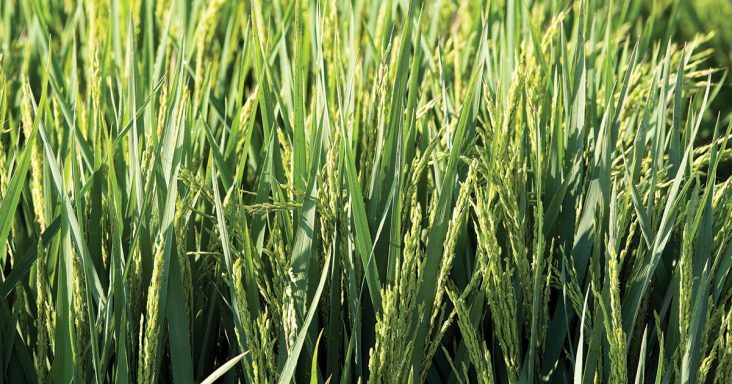Report: Rice prices rise slightly, while corn, cotton and soybean farmers face historic lows
by April 22, 2020 4:43 pm 1,663 views

COVID-19 continues to loom over the world’s cotton industry and other crops have a gloomy outlook, according to a report by agricultural economists with the University of Arkansas System Division of Agriculture. One bright spot might be rice, with the price and number of planted acres rising this spring.
In addition to COVID’s impact on the global markets, Arkansas’ crop producers have two other worries. The first includes the extended periods of wet conditions and waves of severe weather that have damaged farms and shut power down to large swaths of the state for days at a time. The second is the lingering fear that COVID will affect the health and availability of on-farm labor.
“The next issue I see potentially coming up are issues associated with workers becoming ill and not having the manpower,” said Jarrod Hardke, extension rice agronomist for the Division of Agriculture. “Most do not have sufficient crews to withstand loss of personnel, but if more cases begin increasing in the farming community these operations are going to be extremely burdened getting fields prepared and planted. I’m starting to encourage growers to make their ‘what if’ plans for these scenarios.”
The report, published online, was produced by Scott Stiles, extension economist, Brad Watkins, professor, Bob Stark, professor based at the University of Arkansas-Monticello, and Alvaro Durand-Morat, assistant professor.
According to a report released by the U.S. Department of Agriculture on March 31, Arkansas farmers were projected to plant 800,000 acres of corn, a 4% increase from the previous year. Cotton acres were projected to drop by 5% to 590,000 acres and soybean acres were projected to be up 9% at 2.9 million acres. Peanuts are projected to rise by 3% to 35,000 acres, while rice acres were projected to jump by 21% to 1.4 million.
Acres in many crop sectors are expected to grow, but recent commodity prices are a mixed bag at best.
Rice prices in the U.S. remain strong with cash paddy prices ranging from $14.25-$15.00 per hundredweight. New crop future prices increased slightly by 0.5% and closed at $12.11 the week of April 13. Thai 5% broken long grain rice was quoted at $572 per ton the week of April 13, running at least $100 above competing Asian countries. In India and Pakistan, COVID-19 is putting a drag on the countries’ export capacity.
Corn futures were down 2% last week. Arkansas cash corn price bottomed last Wednesday at $3.27 per bushel before rising to a closing statewide average of $3.32 on Friday (April 17).
Soybean futures prices were down 2.8% last week, closing at $8.51 per bushel for the week of April 17. Despite a midweek recovery before Easter, prices slid to an $8.30 closing average on April 17.
“Cotton prices remain under pressure as the U.S. Department of Agriculture projects global cotton consumption to fall to a six-year low and world ending stocks to reach five-year highs,” Siles said.
In its April supply and demand estimates, USDA expects the U.S. 2019-20 season-average farm price to be 59-cents per pound.
“Over the past four weeks, applications in the U.S. for unemployment benefits have swelled to more than 22 million people,” Stiles said. “This likely translates into a massive drop in textile and apparel sales and a significant impact on the global textile sector overall. Anecdotal evidence in recent weeks indicates that growers are still evaluating planting decisions and, in some instances, reducing cotton acreage.”
“Alternative corn and soybean crops are seeing prices at historically low levels, however, they might offer advantages in terms of lower production costs and less intensive management,” Stiles said.
